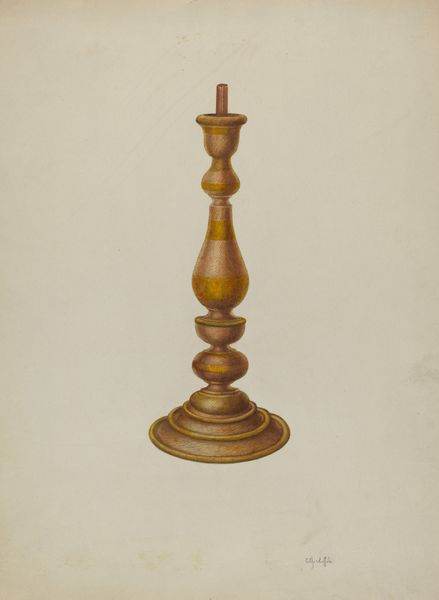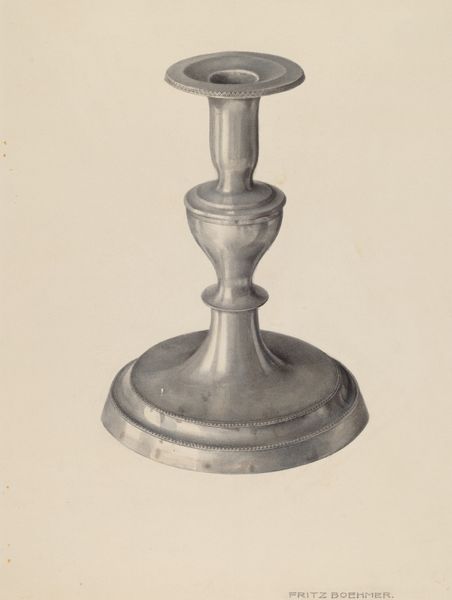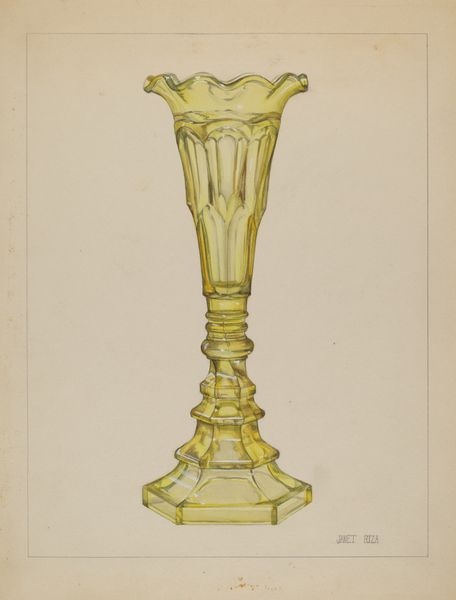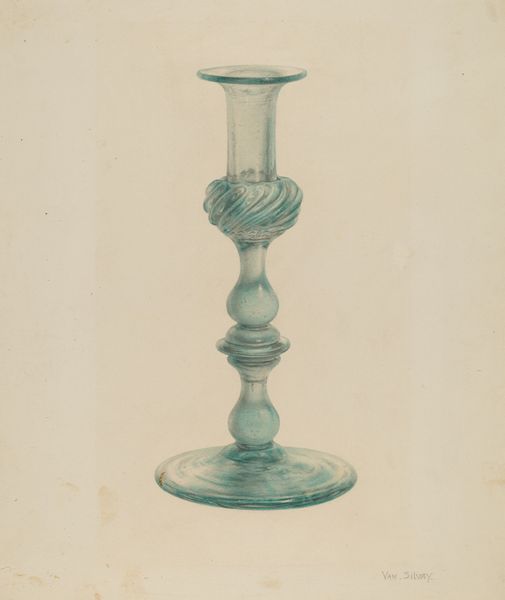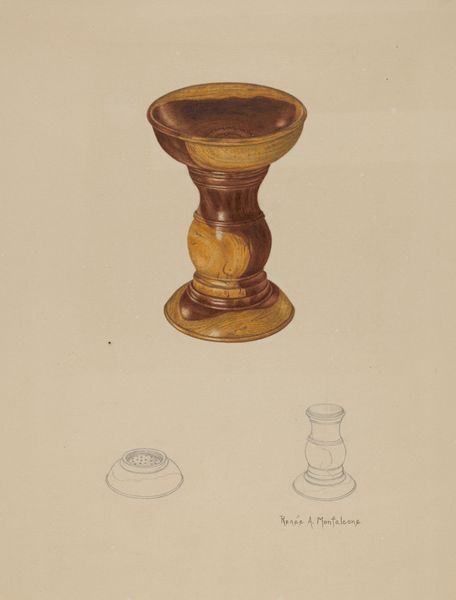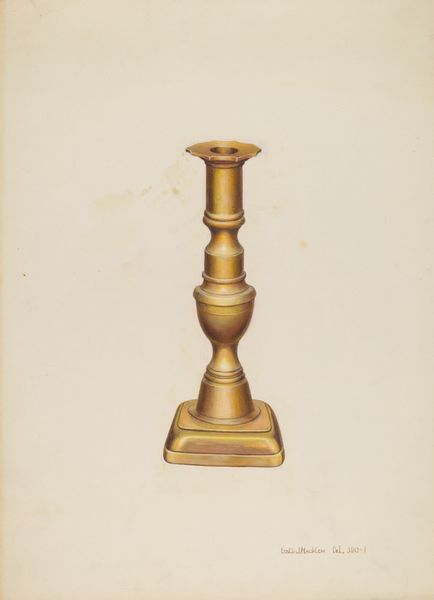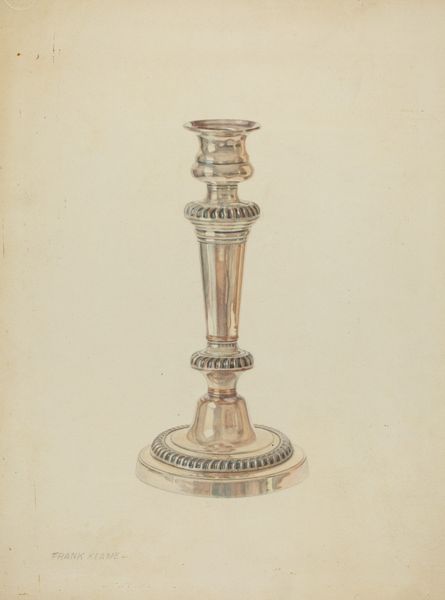
drawing, watercolor
#
drawing
#
oil painting
#
watercolor
#
geometric
#
watercolour illustration
#
watercolor
Dimensions: overall: 34.5 x 27.8 cm (13 9/16 x 10 15/16 in.)
Copyright: National Gallery of Art: CC0 1.0
Curator: This watercolor on paper, "Candlestick," was created by William Schmidt sometime between 1935 and 1942. What strikes you initially? Editor: That it mimics metal, perhaps even attempts at gilding. I’m drawn to how utilitarian objects, seemingly devoid of intrinsic value, gain prominence through deliberate representation. It really elevates the mundane. Curator: Absolutely. Consider the candle as a symbol: it represents illumination, guidance, and of course, the transient nature of life. Presenting it this way emphasizes those enduring associations and beliefs around its symbolism. The candlestick merely provides the vessel. Editor: Yet, let’s consider the means through which we encounter this candle. Its significance lies within a visual medium that uses humble materials— watercolor and paper—to give the *illusion* of substance. The "artworkness" originates in this interplay between perception and material facts. Was it based on a readily available manufactured item, a precious heirloom, or entirely imagined, influenced perhaps by styles of metalworking common during the 30's and 40's? Curator: Its very ordinary rendering is key, isn't it? It suggests ubiquity, or rather it echoes objects encountered in countless households across time. Schmidt seems to suggest this form possesses universal, timeless qualities, more archetypal than functional, perhaps. It’s a simple, effective statement on cultural persistence. Editor: Though one must question access to these commodities, particularly during times of austerity. Its very depiction then acquires political weight, as this rendering hints at prevailing manufacturing conditions of metal consumer goods in this specific socio-economic context. Curator: Fair point. It provides a view into historical materiality and aspiration, reflected through common objecthood. Thank you for enriching my understanding. Editor: The pleasure was all mine. I’ll never look at another candlestick the same way.
Comments
No comments
Be the first to comment and join the conversation on the ultimate creative platform.

